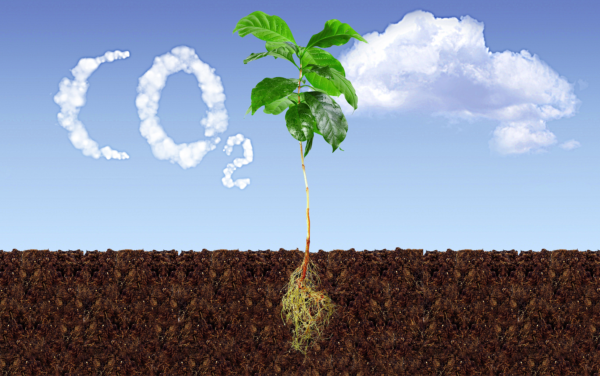
The export sector is committed to global efforts for the climate agenda.
Based on the ongoing multilateral agenda, 2021 appears to be a watershed for discussions on social and environmental responsibility in agri-food systems.
Debates about stakeholder capitalism – focusing not only on profit but also on the value delivered to stakeholders, including Society – have been present at the World Economic Forum and the United Nations (UN) for decades. However, they have reached greater relevance in 2021, with the pandemic scenario and growing concerns regarding climate change impacts on life on the planet.
At the “Davos Agenda” in January this year, the importance of ESG (Environmental, Social, and Governance) for the sustainability of companies’ long-term financial returns was a central point and gave the topic greater visibility.
In November 2021, all eyes will be on COP26, the United Nations conference on climate and environment, taking place in Glasgow, Scotland. It is being considered one of the most importante events in history. Governments and the private sector will show what they intend to do to avoid an increase of more than 1.5°C in global temperatures in comparison to the 19th century.
The coalescence between consumer behavior and the agenda of the international agreements under discussion is clear.
A recent survey conducted by PricewaterhouseCoopers – PwC¹ in the United States, Brazil, the United Kingdom, Germany, and India shows that the Covid-19 pandemic has broadened the range of conscious consumers willing to pay more for healthier, safer, and more environmentally and socially responsible products and brands.
The overwhelming majority of consumers and workers said they are more likely to buy from or work for companies that share their values among the various ESG elements.
The consequence of this scenario for agribusiness is that issues such as biodiversity conservation, decent work, reduction of carbono and water footprints, good agronomic practices, traceability, and due diligence will increase its influence on the international trade of agricultural products and direct impacts on the reputation of origins, brands, and access to markets.
 To balance charges and rewards, the greatest challenge lies in unlocking broad payment programs for environmental services that are provided by food, fiber, and energy producers to society, including the global carbon market, whose definition of clear rules is one of the great expectations for COP26.
To balance charges and rewards, the greatest challenge lies in unlocking broad payment programs for environmental services that are provided by food, fiber, and energy producers to society, including the global carbon market, whose definition of clear rules is one of the great expectations for COP26.
The first step in this direction is to quantify and give visibility to the environmental conservation actions taking place in Brazilian agribusiness. Regarding national coffee, the investments in research, development, and innovation, the environmental preservation of producers, the strict and modern Environmental Social Laws, and the organization and efficiency of all segments have brought Brazil as the absolute leader in the global market of the commodity today.
It is, therefore, necessary to reflect on how to prepare for the future in the context of the ESG, emphasizing the pillars of sustainability, including a vision of oriented corporate governance.
In addition to sustainability and advances in corporate management, applying ESG practices will be necessary to improve communication and promote the image of Brazilian coffees, highlighting strengths and opportunities.
The Brazilian coffee industry provides many environmental services to society. This is a result of investments in research that promote productivity leaps, enabling the conservation of significant areas of native vegetation and biodiversity on rural properties.
To bring more transparency to the contributions of Brazilian coffees to the social and environmental agenda of multilateral forums, especially COP26, one of the initiatives of the Brazilian Coffee Exporters Council (Cecafé) is to measure the net balance of GHG emissions in the main origins of Minas Gerais, the largest coffee producer state in the country.
Developed together with associated exporters and global partners, under the technical and scientific leadership of Professor Carlos Eduardo Cerri, from the University of São Paulo (USP), and the Institute for Forest and Agricultural Management and Certification (Imaflora), this project will calculate the carbono captured from the atmosphere and stored in the soil of coffee plantations and in areas of native vegetation that are conserved pursuant to the Brazilian Forest Code, in coffee farms in the South, Cerrado, and Matas de Minas.
Promoting and giving more visibility to forest conservation in coffee producer territories is one of Cecafé’s objectives with the action. Recent data published by Embrapa Territorial², based on the Rural Environmental Registry (CAR), corroborate that the scenario is “green” in the three regions under analysis in the project. In the rural areas – in which coffee is one of the crops planted – of the municipalities in the South of Minas, Cerrado Mineiro, and Matas de Minas, there are 51.1 thousand km2 set aside for native vegetation, an area 1.25 times larger than Switzerland, for example.
Based on the methodology of the United Nations Intergovernmental Panel on Climate Change, Cecafé’s carbon project will serve as a scientific foundation for new export trade actions on the sustainable development agenda. It will also demonstrate, in the main consumer markets for Brazilian coffees, that national origins combine competitive and eficiente production with environmental preservation.

To advance in conquering new markets, the exporter segment is committed to continuously disclose these intrinsic characteristics of Brazilian coffee growing, which are in line with the international social-environmental agenda and consumer behavior trends.
Marcos Matos
CECAFÉ CEO
Silvia Pizzol
CECAFÉ Sustainability Manager
[1] Beyond compliance: Consumers and employees want business to do more on ESG – https://www.pwc.com/us/en/services/consulting/library/consumer-intelligence-series/consumer-and-employee-esg-expectations.html
[2] Areas dedicated to the preservation of native vegetation by the rural world in Brazil in 2021 – https://sites.google.com/view/websitecar2021/introdu%C3%A7%C3%A3o?authuser=0


Leave A Comment